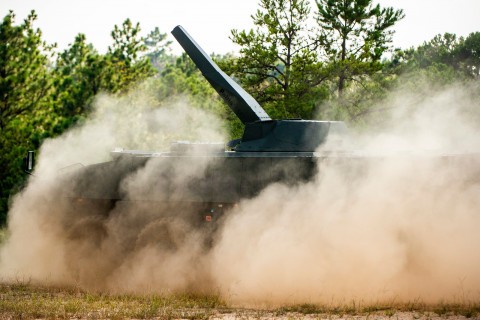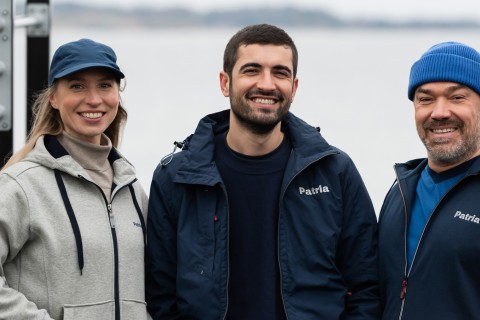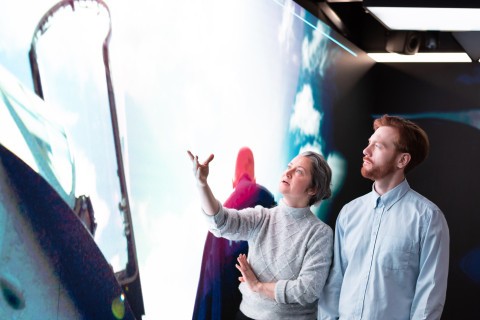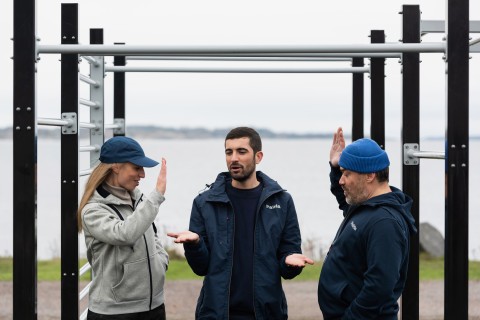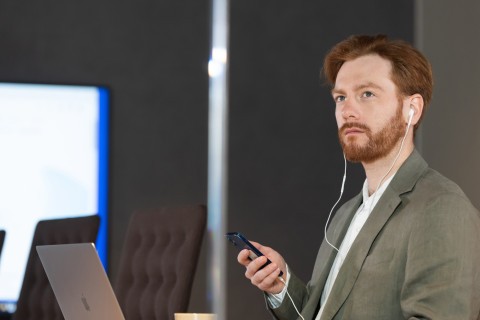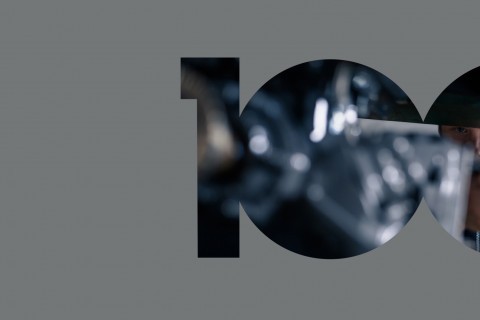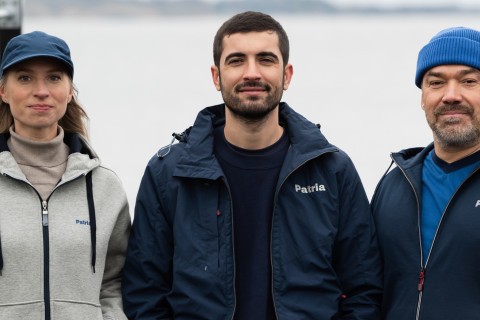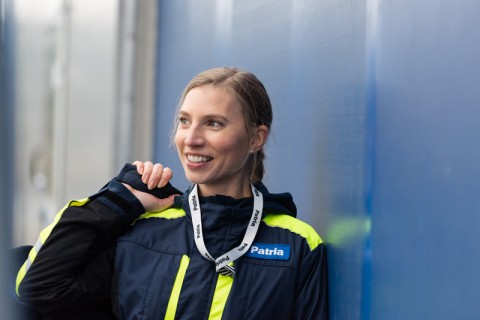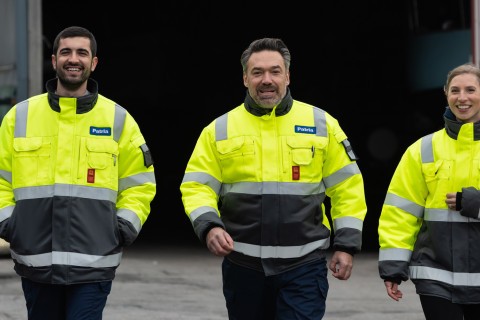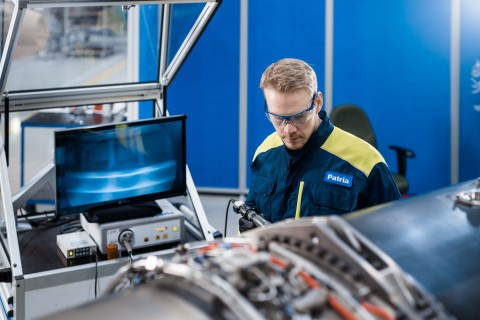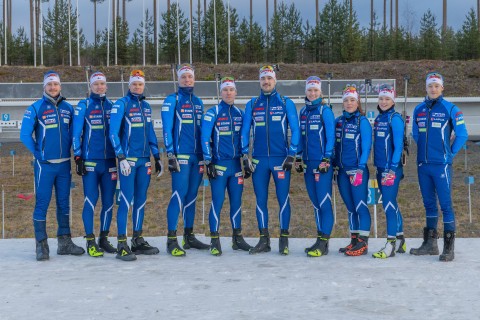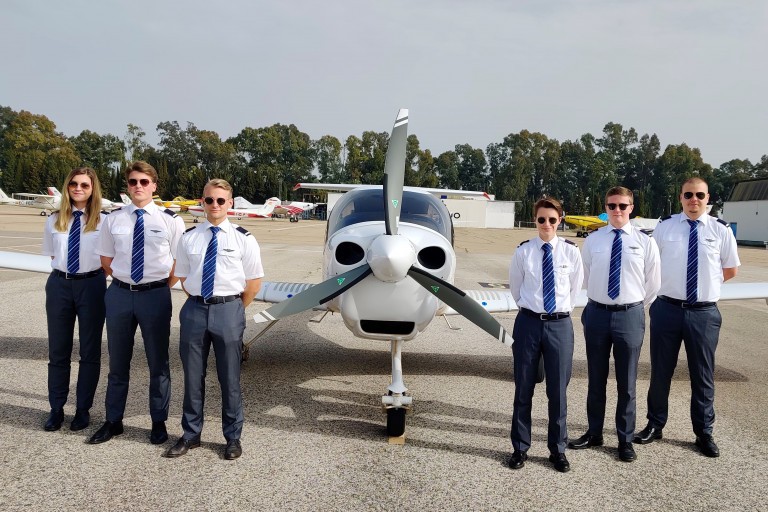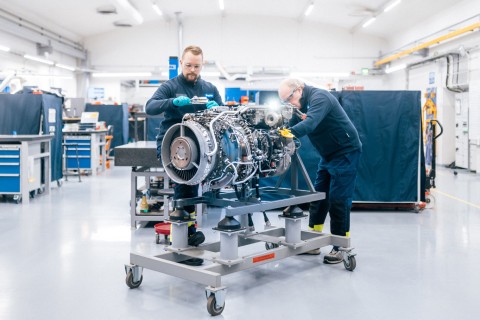
3.6.2019
The top-notch technology and versatile pilot training available at Patria’s flight school appeal to large airlines.
“Patria has become a sought-after pilot training provider in the international arena. Our new flight school that opened next to Tampere-Pirkkala Airport a couple of years ago has got off to a flying start”, says Head of Operations Ville Kettula.
“Large airlines are showing a huge amount of interest in our pilot training services. They choose which pilots to send here, and Patria runs the courses. For example, Patria already provides basic flight training for new commercial pilots of Nordic Regional Airlines. The first course started in May of 2017”, Kettula explains.
“We currently run one course every year for Nordic Regional Airlines, and we accept 15 students at a time.”
Since its launch in 1998, Patria Pilot Training Oy has become one of the leading pilot training centres in Northern Europe, and it now employs 30 permanent staff in Pirkkala.
“We have trained more than 1,000 pilots in just over 20 years”, Kettula says.
Sights set on Spain
In the future, the flight school’s students will see a lot more sun out of their cockpit windows. Patria announced in April of 2019 that it will relocate its basic flight training operations, which rely on the single-engine DA40 fleet, to Córdoba in Spain.
“This means moving six of our single-engine DA40 trainers to Córdoba. Our theory and simulator training modules for commercial pilots will still be run in Pirkkala, as will our multi-engine and instrument-based flight training in the DA42.”
There are currently four DA42 trainers in Pirkkala. One of the biggest motivations for the change was the weather in Spain, which enables Patria to run basic flight training courses effectively throughout the year. The plan is to begin flying in Córdoba in the summer of 2019.
The move to Spain also increases Patria’s training capacity without having to expand the existing fleet of trainers. Furthermore, it prepares Patria for the growing numbers of international airlines looking to use its services.
“We want to boost our civil aviation business, and the move to Córdoba makes that possible. Our basic flight training students will complete approximately half of their flight hours in Spain, after which the course continues in Pirkkala”, Kettula explains.
A versatile range of services
Pirkkala is still the number-one priority in plans relating to Patria’s pilot training operations. At the time of the interview in April, the pilot training centre had seven courses in progress and 110 students.
“We are hoping to bring the number up to more than 200 students in the future”, Kettula says.
The two-year basic training course for professional pilots includes an extensive theoretical component of approximately one thousand hours. This means between approximately 200 and 250 flight hours, depending on the training programme.
One of the courses is tailored specifically to Kazakh pilots. A second Kazakh course is due to run in the summer. “Our flight instructor training course, which began in February, has an impressive 11 students.”
The fact that more and more flight instructor training courses are now also needed is evidence of the growing popularity of flying. International air travel is creating more demand for pilots thanks to the increasing appeal of Asian routes, for example.
“Natural staff turnover in the industry is also relatively high at the moment, as many pilots are retiring”, Kettula explains.
MPL – a success story
The success of Patria’s pilot training operations stems in part from important decisions made in the past. One of these was the launch of a new Multi-Crew Pilot License (MPL) training course a few years ago.
“Our MPL training course combines basic pilot training with aircraft-specific training in the Airbus A320. MPL training relies on both real aircraft and more and more on modern flight simulators. We have our own Airbus A320 simulator in Pirkkala as well as two DA42-VI simulators”, Kettula explains.
According to Kettula, Patria’s flight training curriculum has evolved massively in recent years. The flight school’s move from Helsinki to Pirkkala in 2016/2017 has only accelerated progress.
“For example, we first began to plan the MPL training course six years ago, and it has really started to bear fruit in the last couple of years. MPL training is clearly the way forward and what appeals to large international airlines.”
New aircraft
Patria’s spick-and-span trainer fleet is a huge asset.
“We have made a lot of changes to our fleet recently, and the overhaul continues. The next aircraft to be decommissioned is the Tecnam P2002 JF”, Kettula says.
The best indicators of a flight school’s success are – naturally – employment figures among former students and positive feedback from airlines. According to Kettula, Patria’s pilot training courses have a great reputation, and pilots who have graduated from Patria’s school are in high demand in the job market.
“Practically all the pilots whom we have trained have found work in the industry.”
What did you like about the article?
Thank you for your opinion! You can share the article on social media using the buttons below:
